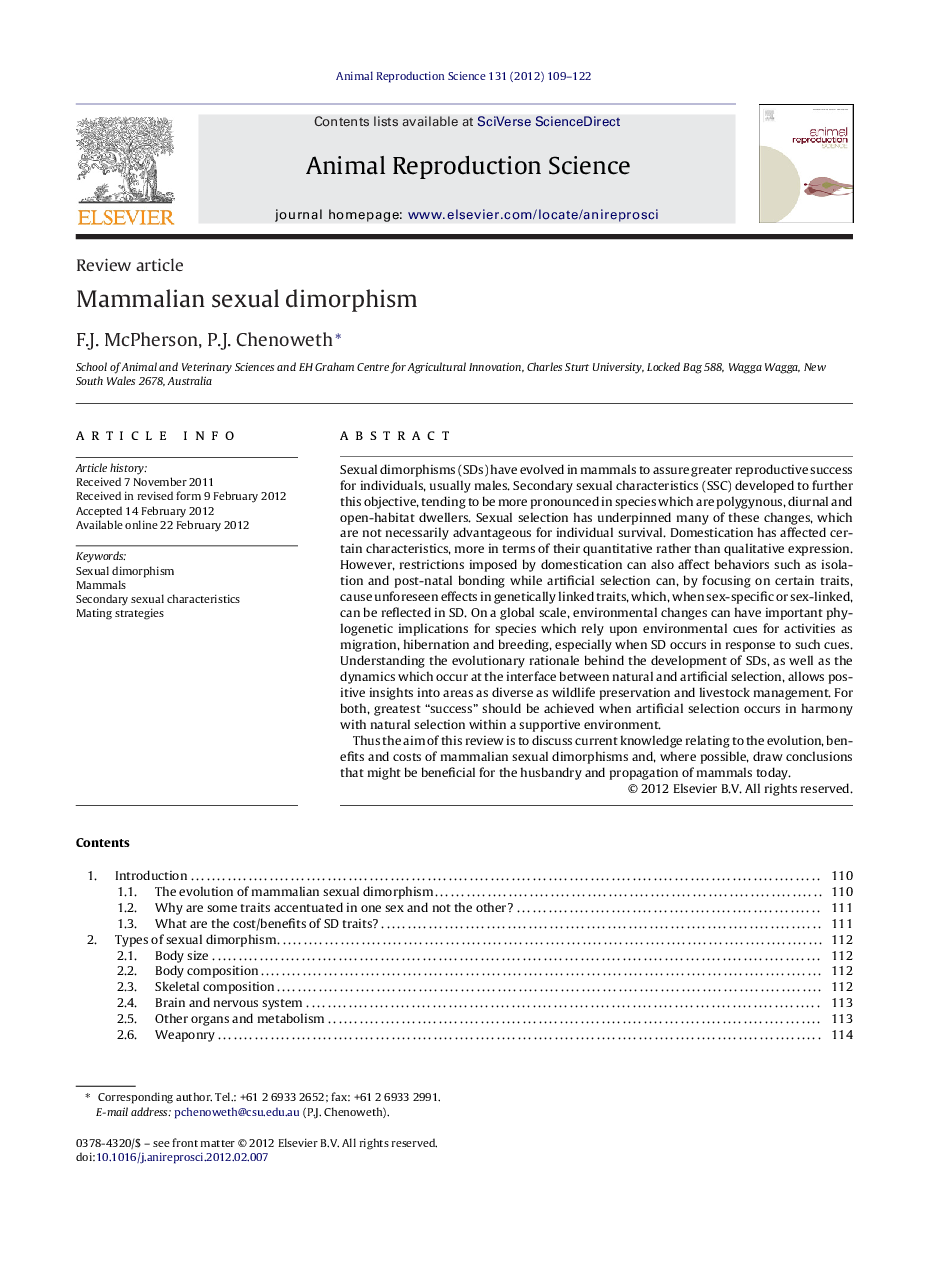| کد مقاله | کد نشریه | سال انتشار | مقاله انگلیسی | نسخه تمام متن |
|---|---|---|---|---|
| 2073190 | 1544762 | 2012 | 14 صفحه PDF | دانلود رایگان |

Sexual dimorphisms (SDs) have evolved in mammals to assure greater reproductive success for individuals, usually males. Secondary sexual characteristics (SSC) developed to further this objective, tending to be more pronounced in species which are polygynous, diurnal and open-habitat dwellers. Sexual selection has underpinned many of these changes, which are not necessarily advantageous for individual survival. Domestication has affected certain characteristics, more in terms of their quantitative rather than qualitative expression. However, restrictions imposed by domestication can also affect behaviors such as isolation and post-natal bonding while artificial selection can, by focusing on certain traits, cause unforeseen effects in genetically linked traits, which, when sex-specific or sex-linked, can be reflected in SD. On a global scale, environmental changes can have important phylogenetic implications for species which rely upon environmental cues for activities as migration, hibernation and breeding, especially when SD occurs in response to such cues. Understanding the evolutionary rationale behind the development of SDs, as well as the dynamics which occur at the interface between natural and artificial selection, allows positive insights into areas as diverse as wildlife preservation and livestock management. For both, greatest “success” should be achieved when artificial selection occurs in harmony with natural selection within a supportive environment.Thus the aim of this review is to discuss current knowledge relating to the evolution, benefits and costs of mammalian sexual dimorphisms and, where possible, draw conclusions that might be beneficial for the husbandry and propagation of mammals today.
Journal: Animal Reproduction Science - Volume 131, Issues 3–4, April 2012, Pages 109–122